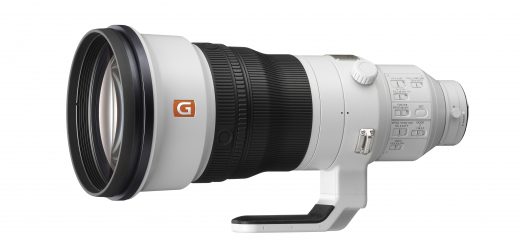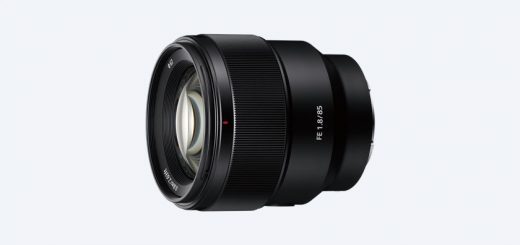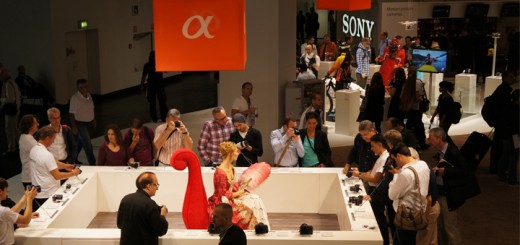Sony Alpha A7 (ILCE-7) and Sony Alpha A7r (ILCE-7r) vs rest of the world. Part 3.
There are many more options to customize the menu, than with any previous E-mount camera. That is good.
But there is still not very logical, how certain options are grouped into sections. In that regard, user guide that comes with the camera doesn’t help at all. Slightly better is user guide for download, but don’t expect it to make you familiar with the camera settings.
As with most previous NEX cameras, expect steep learning curve until you get familiar where is what in the menu.
On the top of the camera, there is mode dial featuring A,S,P,M (creative modes), 1,2 custom settings, movie mode, panorama mode, Scene mode and green Auto mode.
Next to it there is shutter, that is slightly closer to the palm and thus less comfortable to use, and even closer to the palm is EV dial, which someone likes, someone doesn’t really understand why it is there. It has it’s use, mainly in the M shooting mode, but also in the panorama or movie mode. In the M mode, it is very convenient way of adjusting your exposure, especially when you set Auto ISO. You can have fixed aperture and shutter speed, set the LCD/EVF exposure effect to ON and follow the scene (histogram). With the EV control dial, you will affect ISO value in a real time.
There is also Custom 1 (from 3 custom buttons all together) on the top plate. That button is quite difficult to reach by finger when you hold the camera, but that is basically the same for all custom buttons, so doing some finger gym in preparation, is not that bad idea.
Back panel is very much NEX 7 like. On top of the back panel, left to the viewfinder, there is Menu button. And on right there is Custom 2 button. Both buttons are important, but switching one or the other, will take your hand in front of the EVF sensors. So if you want to access menu while reviewing images, your LCD will probably black out when you move your hand to press menu button. Because switching between LCD and EVF is not very fast, whole experience is rather annoying.
There are actually two more control wheels, kind of tri-navi system, one on the back, and one on the front, and usually you use them to alter exposure (aperture and shutter speed) in shooting creative modes.
Very useful control, that I loved on NEX 7 is the back AE-L/AF/MF combined lever with the button. You can configure your A7/r cameras to focus only when this button is pressed, and that is very useful in many situations.
Overall Sony A7/r cameras are nice move ahead in terms of interface ergonomy, but there is still lot of work to be done. I am sure, firmware update will fix some of shortcomings, such as complicated zooming in playback mode. (You have first to press C2 button, then the image zoom to 100% and then you can zoom out using back scroll dial or AF/MF button. It will be much easier if you can program center button (from main back dial command, to instantly zoom in steps, as it was with previous NEX models) Adding possibility to set minimum shutter speed in A and P mode, will be also highly appreciated.
Sensor size and resolution
Back to image comparisons. In this part, I would like to show you what those different sized sensors mean in a real life from another perspective…
I used Nikon 14-24 G ED IF AF-S lens set at 16mm for this test. All cameras were on tripod and at the fixed position. That means that unlike in the ISO12333 chart comparison, I didn’t move to compensate for differences in FOV.
This comparison should help you to better understand differences in sensor size, sensor resolution and FOV, so that you can consider what camera suits your needs better. (In that regard).
As I said before, things are not black and white like it might seem, when it comes to resolution. 36 mpx on FF can actually mean less resolution at the same distance from the subject, than 16 mpx on m4/3.
What am I talking about? Let’s see…
First, let’s compare FOV differences:
As you can see, with a different sensor size, FOV changes and as a result – magnification changes too. (building in the background is largest in the Olympus OM-D E5 (smallest sensor) image.
In this moment however, resolution of the sensor starts to play its role. Let’s look at the 100% crops of that building in the background, without up-sampling or down-sampling images, but leaving them in their native resolution.
You can see now, that beside same sensor size of A7r and A7 or NEX 7 and NEX 5N, magnification using same crop size differ. So NEX 7 will resolve more than NEX 5N, despite same FOV, and Olympus OM-D has an edge in terms of resolution of that distant building, no matter than it has smallest sensor and lowest resolution.
This is something that quite lot of my friends still don’t understand. They think that more megapixels and larger sensor will always resolve more. As you can see, it is not that simple.
Trick is, that as you can see in the first sample, you can fit more of the image with the same lens with a Full Frame sensors than with m4/3 i.e. and that you should resolve more details from a higher resolution sensor at a comparable sensor size (A7r vs A7).
If you want, you can download original DNG files here and explore them yourself.
Please, note that if you want to share any of those images for non commercial purposes, you are allowed to do so, and I will be grateful if you credit the source with a tag “verybiglobo.blogspot.com”.
If you consider to use image/s for commercial purpose, you should contact me first.
All rights are reserved.
There is another thing that goes together with sensor size and that can affect final resolution – Depth Of Field (DOF), but more importantly for purpose of this article – it will affect subject isolation at comparable field of view.
To make you better understand what I am talking about, without explaining why it is so (you can find many great web explanations about differences in DOF related to the sensor size, subject distance, background distance and lens FL) I will show you another comparison in the next chapter… But that will take few days 🙂
Keep watching this blog, as there is many more to come, that should help you to decide were A7 and A7r are cameras for you, and if so, which one should you buy.
Other parts of this rolling review:
Part 1
Part 2
Part 4
Part 5
Part 6
Part 7
Part 8
Part 9 – A7 vs A7r Final Showdown
Please help support this page and upcomming reviews and buy through affiliate links, with no extra cost for you:
Buy on BHPhoto: Alpha a7 Mirrorless Digital Camera
Buy on Amazon: Alpha a7 Mirrorless Digital Camera
To help this page survive, your donation will be highly appreciated.


















you don’t sound overly extatic about those cameras hehe, keep them review parts coming! I got 3 questions regarding those cams:
1) how is the image preview speed on them? on Nikons I got used to nearly instant reaction to “play” button, next/prev photo preview etc, while on my nex5n it’s really really slow
2) is the “zoomed-in” preview of photos available? like on Nikons, you could zoom in on a photo and then switch to the next photo with control wheel, all while keeping the maginfied view
3) I’ve seen the cameras have 1&2 presets, how customizable are those? Can I for example, set “2” to be black&white color preset with red focus peaking, while the “1” stays standard color preset with focus peaking off?
cheers!
Hi and thanks for reading my blog. I am not extatic, because I want to bring you objective review without marketing crap. Of course, there are always some subjective statements, especially when it comes to design, but most of important informations that I would like to share, are and will be supported by images. I am trying to think well each test, so it takes quite some time to publish them.
To your questions…
1) Reaction speed from taking the picture to review it by pressing “play” is very good IMO. Better than with NEX 5N. Maybe not up with Nikon, but I wouldn’t mark that as a problem. However, reaction time from “sleeping” to operational mode is sometimes very, very long and that is very ennoying.
2) Yes you can, but… That phrase is probably best description of Sony A7 products… you can do most things but… Browsing through the images in magnified view is possible with the front scroll wheel. But to enter magnified view, you have to press C2 button first, which will bring 100% view (at least I think so) and then you should press AF/MF/AEL button or back scroll wheel to reduce magnification and get the idea where you are within the frame. If I remember well, something similar was critisized with Nikon D800E initial firmware, so I believe that Sony will fix that behavior. At least there should be option to use middle of the main dial (ok button) to zoom in step by step. That is not possible for now.
3) Yes, but 🙂 You can save in your custom settings only items under camera settings section. The complete list should be found in manual, but from important things there are – image size, aspect ratio, quality, panorama size and direction, movie file format, movie size, drive mode, focus area and settings (Af-S,Af-C,DMF,MF), ISO, metering mode, white balance, DRO/HDR settings – what you asked – Creative style (BW for you), Long exposure and High ISO NR, Scene selection, Steady shot, Color Space, and few other mainly video related settings. On top of that camera will save the shooting mode, that you pre-set before memorizing your settings (on the mode dial). As you can see, there is no focus peaking. Focus peaking settings are in the Custom settings section, and it will not be saved in your custom profile. But, you can assign several buttons to change peaking color, peaking level or peaking itself at a single press.
I am yet to understand (if it is even possible) Sony interface logic and what belongs where. It could happen that some customs settings will be memorized, while others not, but I can confirm that focus peaking settings are not saved within custom profiles.
Hope it helps,
Viktor
thanks for such detailed answers! It’s funny how big corporations often fail to deliver the mostly software details that make products great.. It’s quite literally an hour of programmer work to add minimum shutter speed option to auto ISO like Nikon has it, yet hundreds of R&D staff, and managers all the way up to the top never thought that it should be added.. heh
Adding both – shutter speed or aperture stop range in the settings will actually make all other creative modes redundant. I believe that is the future…
Nikon has that right, but you’ll find another bunch of nonsenses in almost all cameras. truth is however, that with Nikon and Canon (and Ricoh, Fuji…) you have the feeling that photographers did participate in UI development, while with Sony, you have the feeling it was done by the PlayStation programmers team.
Vypada to ze se Nikkor 14-24 chova v okrajich obrazu vyrazne lepe na A7R nez na D800. Nebyli by nejake RAW-y z A7R s nejakou plošši scenou kde by slo posoudit 14-24 detailneji ? Daniel
Hi Daniel and thanks for reading and commenting. I can’t really say if Nikkor 14-24 perform better on A7r than on Nikon D800E. It wasn’t my intention to compare lens performance on different sensors. The problem with UWA lenses and testing on flat target is a distance factor. In reality, most of the UWA lenses are optimized for medium and large distances and their performance on short distances might be field irrelevant. To find flat target at medium or large distances with that large angle of view is virtually impossible, so the best what can be done IMHO is to take test shots of a distant cityscape, where buildings could create good background for judging lens performance character (field curvature, spherical aberration, chromatic aberration, coma etc.)
I would love to do this with A7r and Nikon 14-24, but I am waiting for the Novoflex tripod ring holder, because the lens is too heavy for E-mount alone, as well as for the good visibilty. I expect the ring to come till the end of January 🙁
(I hope you don’t mind that I responded in English, but maybe some other follower would like to share info or comments based on this reply).